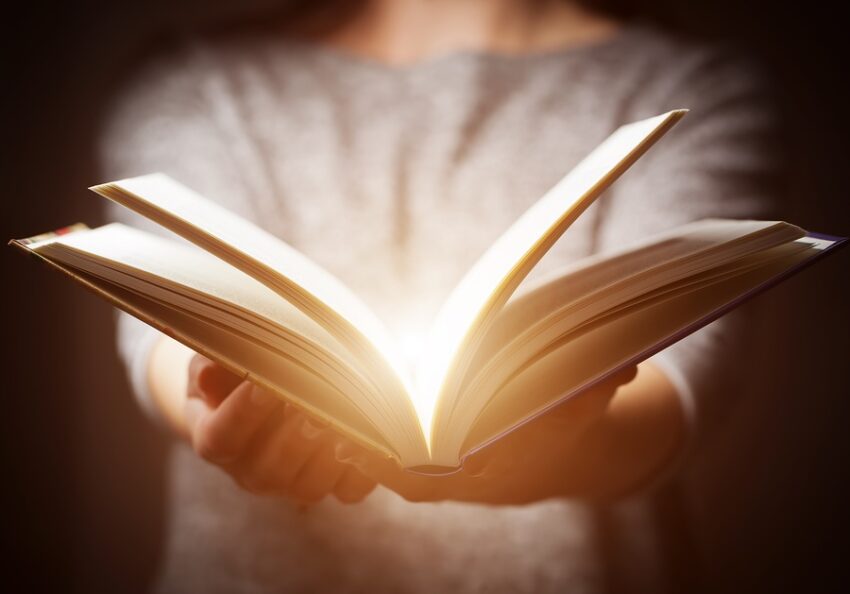This past week I had the privilege of spending some time with our grade 5 class at lunchtime. Though I was truthfully filling in as a lunch monitor to help out, it was an opportunity to get to know the kids that I did not want to pass up. It was an enjoyable half hour, but instinctively I seemed to know that the quickest way to connect with these kids was to share a story. And so I told them of the time I caused a minor explosion in the Hebrew Academy science lab that filled the room with yellow foam. The story itself is not very important but the immediate connection that it provided with the children was fascinating in the space of about 20 minutes we shared something special. They asked questions, I answered, we laughed, we shared- all in all a good time. The power of story as the foundation of connection is actually at the heart of Judaism.
Many religions and faiths begin by establishing a house of worship, a physical building to which religious practice is tied. For Jews, our communities begin with the establishment of the House of study (Rashi on Bereishit 46:28, Bereishit Rabba 95:3), but even before that, it begins at our very tables, as we sit with our children, passing the stories of our people from one generation to the next.
In this week’s Parasha, after 430 years of slavery the Jewish people gather, approximately three million souls, poised to leave Egypt in the largest exodus history has ever seen. Leaving behind a life of bondage for freedom in the promised land, Moshe addresses the people. The greatest leader of all times, at this most momentous occasion, speaks to the people not about the greatness of the moment, not about the land of milk and honey that awaits, not of the evils of the Egyptians nor of the transition from bondage to freedom. Moshe instructs the people on giving over the story of what they are witnessing to their children, looking to the future and the importance of educating our children. His words have become the text of our Passover Seder. “ […] it shall be that when your wicked children say to you what is the service to you you shall say, it is a paste of feast offering to you God who passed over the houses of the children of Israel and Egypt when G-d smoked the Egyptians, but God saved our household” (Shemot 12:26-27). “…and you shall tell your child [who doesn’t know how to ask] on that day saying ‘it is because of this that G-d acted on my behalf when we left Egypt’ ” (Shemot 13:8). And finally: “and it shall be when your [simple] child will ask you at some future time what is this you shall say to him with a strong hand, G-d removed us from Egypt from the house of bondage” (Shemot 13:14). And so it is that the Jewish people have gone through this very ritual, children asking questions and adults answering their questions, generation after generation, telling the story of our people.
Our stories are what bind us to one another, they are the glue that binds one generation to the next, it is our common narrative that connects us to G-d, and our collective memory of the miracles that He performed for us. Our stories will connect us to our faith and to our values. “…. as long as we never lose the story, we will never lose our identity.’ (Rabbi Jonathan Sacks, z”l). Yet it is not enough to just to tell our stories. We must encourage questioning, we must visualize that shared experience, almost feeling as though we ourselves were there. As the Alter of Kelm explains, while the intellectual knowledge of G-d was sufficient for our Patriarchs, later generations require an emotional bond. With the distance of time it becomes more and more important to stimulate the senses as we do each seder night to bring to life the story of the Exodus from Egypt which connects us all as a people.
Interestingly, the parasha begins with the word “ulema’an”, “and in order”, “that you tell your children about the signs and miracles God performed on our behalf” (Shemot 10:2). The only other time that this word appears is in reference to the reward for the mitzvah of honoring one’s parents. Rabbi Yochanan Zweig offers an explanation for the possible connection of Yetziat Mitzrayim and Kibbud Av va Em. The plagues not only showed the Egyptians G-d’s supremacy, it was also a demonstration of how much G-d was willing to do for His people. “Love and honor benefit everyone, but only when they are expressed.”
The power of storytelling and its centrality to Judaism is underscored in this week’s parasha. Sitting around the Shabbat table, the Yom Tov table, or even simply a weeknight dinner, sharing stories with friends and family, have always been my favorite. Hearing the stories of those who came before us, learning how they lived, imagining myself in their place has always fascinated me and bridges the gap between our generations. These days, not everyone is blessed with people to share their meals with. Many of our seniors are finding themselves alone and unable to leave their homes. They are amongst the most vulnerable right now, at important risk due to isolation and depression. Federation CJA is relaunching their phone call initiative and they need volunteers. Why not pick up the phone and help them out? Ask them what it was like when they were growing up? You have an opportunity to break the isolation, and if you are lucky, they may just have a fascinating story to share.
If you are interested in participating in the Federation CJA phone call call initiative, click here to fill out a form and someone will contact you with further instructions.
Shabbat Shalom!
Dr. Laura Segall
Head of School

